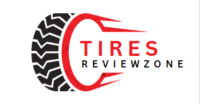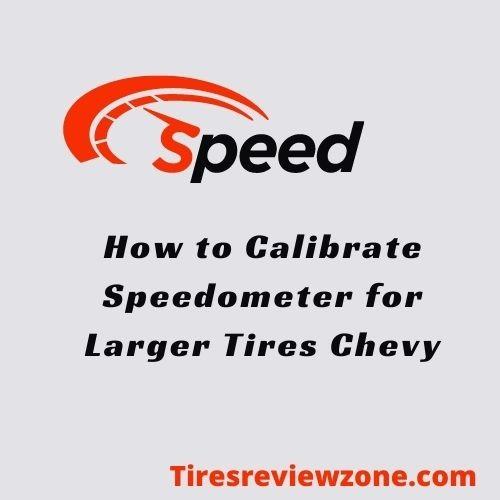If you have just installed larger tires on your Chevy and are having trouble with the inaccurate speedometer, don’t worry – you’re not alone! Lots of people have problems like this. We’ll show you how to calibrate the speedometer for larger tires Chevy. It’s a quick and easy process, and by following these steps, you will be able to get an accurate reading from your speedometer once again.
How do you calibrate a speedometer for larger tires?
You calibrate a speedometer for larger tires by inputting the new tire size into your car’s computer.
Most cars have a built-in computer that calculates your car’s speed based on wheel revolutions. When you switch to larger tires, your car’s computer needs to be told about the change in size to calculate your speed accurately. This happens by inputting the new tire size into your car’s settings.
Some cars also come with an adjustable speedometer, which means you can manually adjust the reading on your speedometer to match the new tire size. Consult your car’s owner’s manual for more information on doing this.
What are the benefits of calibrating your speedometer for larger tires?
There are a few benefits to calibrating your speedometer for larger tires:
- It can help improve your gas mileage. Larger tires have less rolling resistance, requiring less energy to move. This can lead to better fuel economy.
- It can improve your vehicle’s performance. With less rolling resistance, your engine will have an easier time moving the tires and putting more power down to the ground.
- Calibrating your speedometer can help you avoid getting speeding tickets.
If your speedometer is inaccurate, you may inadvertently exceed the posted speed limit without realizing it.
What are Chevy models compatible with this procedure?
A few different Chevy models are compatible with this particular procedure. There tend to be a few pretty popular models, such as the Camaro and the Corvette. However, other models can work just as well. These include the Cruze, the Sonic, and even the Spark. Therefore, I believe it all boils down to your personal preference and what you want in a car. Whatever option you choose, you’ll be able to drive a dependable vehicle for many years to come.
Are there any risks associated with calibrating your speedometer for larger tires?
Yes, it’s essential to be aware of the potential risks of changing your speedometer calibration for larger tires. Your speedometer will read slower than your actual speed when you install larger tires. This can lead to dangerous driving habits, as you may unintentionally drive too fast for the conditions.
The dashboard’s speed reading could get you a ticket if you’re speeding. To avoid any legal issues, it is essential to consult with an experienced traffic lawyer before making any changes to your speedometer calibration.
How can you tell if your speedometer works correctly?
There are a few ways to tell if your speedometer is working correctly. First, you can check the markings on the speedometer itself. Most speedometers have marks that indicate the highest and lowest speeds that they are accurate for. If your speedometer doesn’t have these marks, or if the marks seem off, it’s a good indication that the calibrator isn’t working correctly.
Another simple way to tell whether your vehicle needs repairs is by watching how it responds at various speeds. If you’re driving along at a consistent speed and your speedometer says one thing, but your car feels like it’s going faster or slower than what the gauge says, then the chances are good that the indicator isn’t calibrated correctly.
What are Chevy models compatible with the calibration process for larger tires?
For those looking to install larger tires on your Chevy truck or SUV, the good news is that many models are compatible with the calibration process. This process helps ensure that your vehicle’s speedometer and odometer are accurately reading the increased size of your tires.
Here’s a quick rundown of which Chevy models are suitable for larger tires:
Silverado/Sierra 1500: All model years 2007 and newer can adjust for up to 42″ tires. We recommend using our Silverado/Sierra 1500 re-gear package and the tire size change for optimal performance
What are some of the pitfalls of not calibrating your speedometer for larger tires?
When driving a larger tire-size car, it’s important to recalibrate your speedometer so you don’t go too fast or too slow. Here are a few of the pitfalls of not calibrating your speedometer:
– You could get pulled over for speeding
– You could damage your car by driving too fast or too slow
– It’s dangerous to drive without knowing your actual speed
How do you calibrate the speedometer on a 2017 Chevy Silverado?
The calibrating of the speedometer on a 2017 Chevy Silverado is relatively simple and does not require any special tools or knowledge. The first step is to find a level stretch of road where you can drive at a constant speed for at least one mile. Once you have found such a road stretch, accelerate to the desired speed and then maintain that speed for one mile. After completing this step, return to your normal driving conditions and check the accuracy of your Silverado’s speedometer. If it is still not accurate, repeat the process until it is.
How do you calibrate a speedometer for larger tires on a GMC Sierra?
If you’ve swapped out the tires on your GMC Sierra for a larger size, you’ll need to calibrate the speedometer to ensure it’s accurate. Luckily, this isn’t a complex process. Here’s how to do it:
- Start by driving your Sierra at a constant speed of around 50 MPH for two miles.
- Next, use a GPS device or phone app to note the distance traveled during that time period.
- Compare the actual distance traveled with what the speedometer said – if the numbers are different, you’ll need to calibrate the speedometer.
Where is the speedometer calibration button?
The speedometer calibration button is usually on the dashboard near the speedometer. It may appear as “SPEED CAL” or something similar. Consult your vehicle’s owner’s manual if you can’t find it; once you’ve seen it, press and hold the button for a few seconds to recalibrate the speedometer.
Does your speedometer need recalibration with larger tires?
It mostly depends on the size of your tires and the speedometer in your car. In most cases, you don’t have to recalibrate your speedometer because the larger tires will rotate slower than the smaller tires. For example, if you have a car with a speedometer that reads up to 160 mph and installs wider tires with a diameter of 30 inches, your car’s speedometer will still read up to 160 mph. However, if you have a car with a speedometer that reads up to 80 mph and installs wider tires with a diameter of 35 inches, your car’s speedometer may now read up to 85 mph.
How much does it cost to recalibrate the speedometer?
Depending on the car’s make and model, it can cost anywhere from $60 to $200 to recalibrate a speedometer. Some mechanics may charge a higher rate if they need to order the calibration tool required for the job.
It’s important to recalibrate your speedometer regularly, as an inaccurate reading can lead to fines and tickets, but it can also be dangerous. A speedometer that is off by even a few mph can cause you to slow down or speed up without realizing it, leading to a severe accident.
Conclusion
While calibrating your speedometer is not a difficult process, it is essential to make sure that you take the time to do it correctly. By following the steps we’ve outlined in this article, you can ensure that your speedometer is accurately reading the speed of your vehicle and that you are driving safely. Have you calibrated your speedometer recently? Let us know how it went in the comments below!

